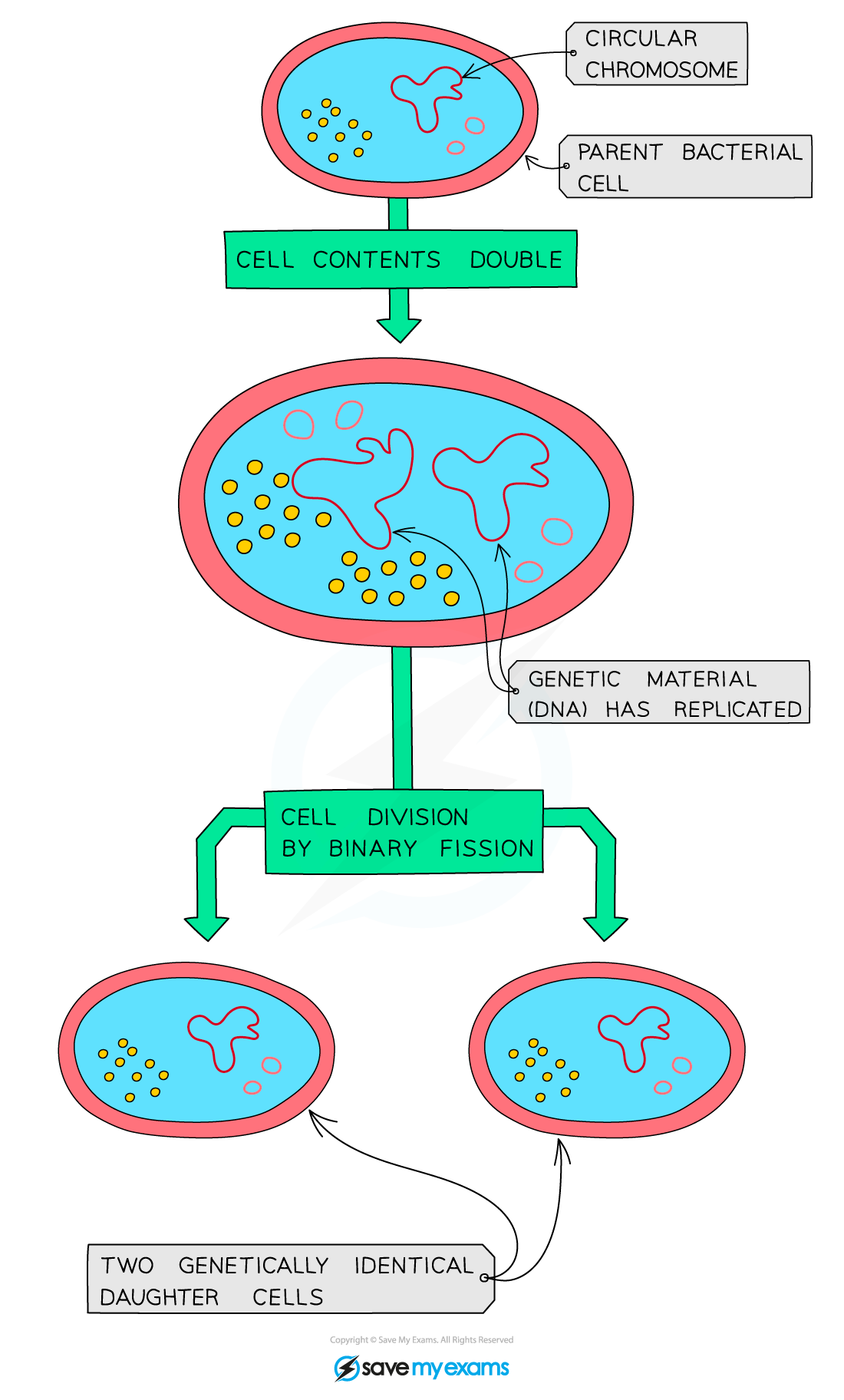Culturing Microorganisms (AQA GCSE Biology) : Revision Note
Binary Fission
Bacteria multiply by a type of simple cell division known as binary fission
In the right conditions, a bacterial cell prepares to divide by replicating its genetic material before it increases in size
A copy of each piece of circular DNA moves to each end of the cell before the cytoplasm divides, and new cell walls form around each daughter cell

Each division of one cell produces two cells, so the number of cells increases by a power of 2 each time binary fission occurs
Growing Bacterial Cultures in the Lab
The effect of disinfectants and antibiotics on microorganisms can be investigated using cultures of bacteria grown in the lab
In the right conditions, some species of bacteria (such as coli) can multiply as much as once every 20 minutes. This is ideal as large cultures of bacteria for study can be grown in relatively short periods of time
To multiply this quickly, bacteria require an adequate supply of nutrients (carbohydrates, proteins, minerals and vitamins) and an appropriate temperature (which varies depending on the species being grown)
Warmer temperatures promote faster growth, but in a school lab the maximum allowed temperature for growth is 25°C
Above this temperature, more harmful pathogens are likely to grow
Bacteria can be grown in a nutrient broth solution or as colonies on an agar gel plate
Uncontaminated Cultures & Aseptic Techniques
It is vital that uncontaminated cultures of microorganisms are grown in the lab
The presence of competing species can affect the growth of cultures, as well as the validity of any study performed on them
Some important aseptic techniques are outlined in the table below:
Uncontaminated culture preparation table

Examiner Tips and Tricks
Only lifting the lid of the petri dish a little is vital to reduce the risk of contamination by other microorganisms. It is not to prevent air from entering, as air is still required by bacteria grown in school labs (more harmful bacteria tend to be anaerobic).
Calculating Inhibition Zone Area
The effectiveness of different antibiotics, antiseptics or disinfectants can be determined by calculating the area of an inhibition zone around a disc of the substance being tested
To calculate the area of an inhibition zone you should use the equation:

Calculating area
Worked example

Calculating the area of a clear zone is a far more accurate way of comparing the effect of different substances on bacterial growth than trying to judge by sight
Examiner Tips and Tricks
It is far more accurate to measure the diameter of an inhibition zone than the radius, but remember to half it before using the area equation above.You will need to take at least two measurements of the diameter of an inhibition zone and find the mean to calculate if the clear zone is not perfectly circular.
Calculating Bacteria in a Population
The average amount of time it takes for a bacterial cell in a population to divide is the mean division time
The number of times a cell has divided and how many cells it produces can be determined if you know the mean division time and how long division has been occurring
Worked example

Examiner Tips and Tricks
Check that both the mean division time and the time the cell has been dividing have the same unit (either hours or minutes).
Calculations in Standard Form
Higher tier only
If you are calculating the number of bacteria present in a population, you are likely to be handling very large numbers (as bacteria can multiply very quickly in certain conditions)
You should be able to express an answer for the number of bacteria in standard form
Worked example


You've read 0 of your 5 free revision notes this week
Sign up now. It’s free!
Did this page help you?

